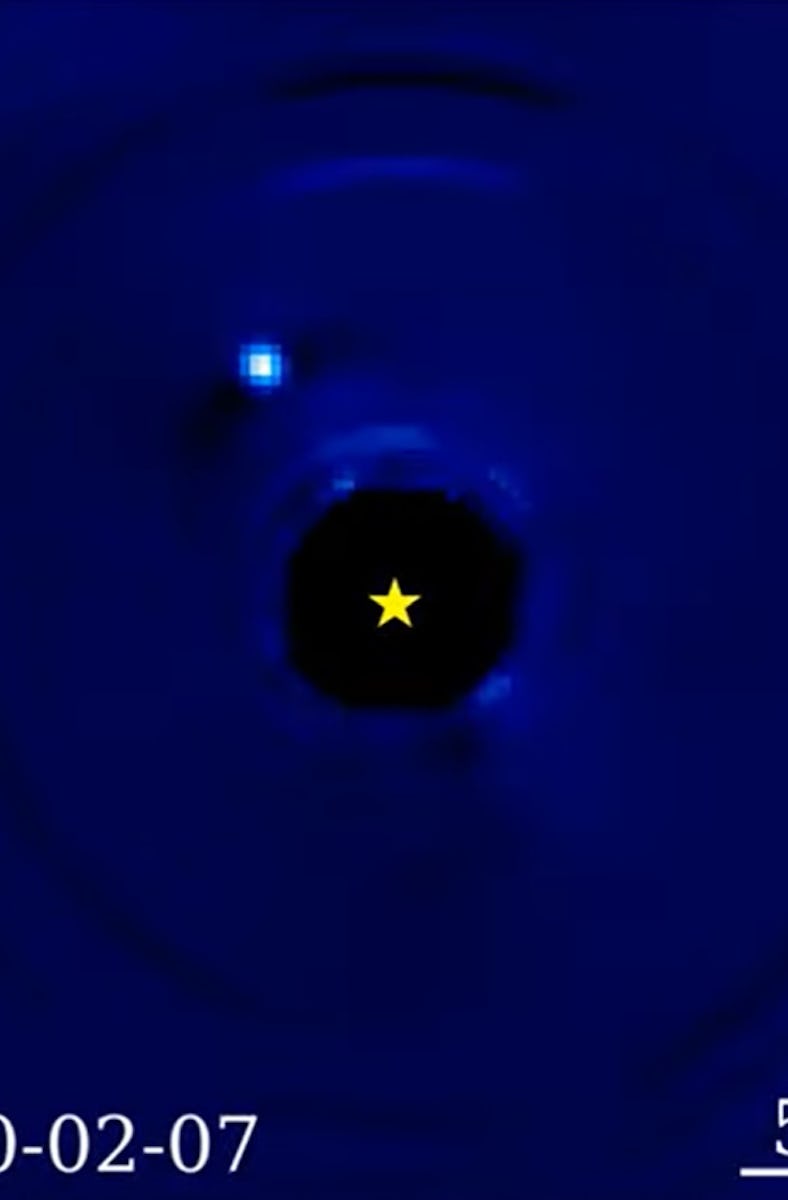Look! Astronomers Release Time-Lapse Footage of an Exoplanet Circling Its Star
Gas giant Beta Pictoris B is ready to start its own TikTok channel — almost.

Beta Pictoris B takes almost 25 years to make a lap around its star, but you can see most of the journey condensed into a ten-second video clip.
Northwestern University astrophysicist Jason Wang and New Trier High School student Malachi Noel recently created a stop-motion video from 17 years of data from the Gemini Observatory and the European Southern Observatory, with some help from artificial intelligence.
“A lot of times, in science, we use abstract ideas or mathematical equations,” says Wang in a recent statement. “But something like a movie, that you can see with your own eyes, gives a visceral kind of appreciation for physics that you wouldn’t gain from just looking at plots on a graph.”
This video was compiled from actual telescope images of Beta Pictoris b and its massive star Beta Pictoris
Gas Giant or Movie Star?
Beta Pictoris B is a huge, bright world. At 12 times the mass of Jupiter, it’s somewhere in between an extra-large gas giant and a brown dwarf (an object not quite massive enough to be a star, but enough to produce a little of its own faint light from less energetic nuclear reactions in its core).
This huge, bright world became one of the first exoplanets astronomers ever directly imaged, and since its discovery in 2003, it’s been photographed by telescopes around the world. In 2020, Wang and Noel gathered data from the archives of the Gemini Observatory and the European Southern Observatory, dating back to 2003. The data took the form of still images — a series of snapshots spanning about three-quarters of the planet’s orbit. And like a cartoon flipbook, Wang and Noel have turned those images into an animation of the planet’s trip around its star.
Because the data came from three different instruments on two different telescopes, spanning 17 years of technology, getting them all into the same format was a challenge.
“Due to the long time range, there was a lot of diversity among the datasets, which required frequent adaptations to the image processing,” says Noel in a recent statement. He used “AI-driven processing techniques” to turn all that data into a single uniform dataset that could be combined into a stop-motion video.
But there were still a lot of gaps between the snapshots, which made the planet seem to jump awkwardly between points in its orbit instead of moving smoothly.
“If we just combined the images, the video would look really jittery because we didn’t have continuous viewing of the system every day for 17 years,” says Wang in a recent statement. He used an algorithm to generate new frames in between the existing snapshots to make the video flow more smoothly (if you’ve got a high-definition TV or if you use video players, they probably do something similar).
The result is this ten-second video clip of a gargantuan planet lumbering around its star.
This is Beta Pictoris completing about three-quarters of an obrit.
Beta Pictoris is a massive, bright young star: about 10 times the mass of our Sun and nearly nine times brighter. To get a better view of the planet, astronomers used an instrument called a coronagraph, which blocks out the bright light from the star. That’s why Beta Pictoris b seems to be orbiting a clipart star icon in the video. Even with the coronagraph, the planet’s fainter glow sometimes gets lost in the blinding glare of the star when it passes too close. At this points, Wang and Noel used an X to represent where the planet would be, even though we can’t actually see it.
Beta Pictoris b orbits its star at a distance of about 940 million miles (about ten times farther than Earth’s average distance from the Sun), so it takes nearly 25 years to complete a lap; Beta Pictoris B hasn’t actually completed an orbit since astronomers first discovered it in 2003, but it’s getting close.
“We need another six years of data before we can see one whole orbit,” says Wang in a recent statement. “We’re almost there. Patience is key.”
This article was originally published on